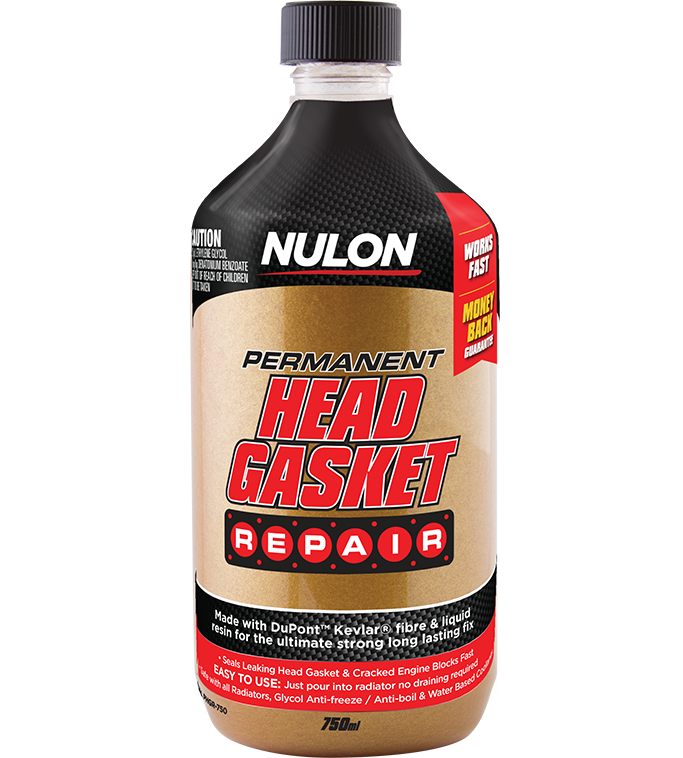Permanent Head Gasket Repair (PHGR)
Nulon Permanent Head Gasket Repair with DuPontTM Kevlar® fibre & liquid resin provides the ultimate strong long lasting fix. Formulated to permanently seal head gaskets and engine block leaks without costly mechanical repair. This unique formula with microfibre technology seeks out and plugs small leaks and cracks that cause coolant loss, loss of pressure and overheating.
Safe to use with all types of glycol anti-freeze/anti-boil coolants and water based corrosion inhibitors.
The DuPontTM Kevlar® fibres combined with the liquid resin interlock and harden, creating a permanent long lasting watertight seal.
Nulon Permanent Head Gasket Repair can be safely used in cars, trucks, vans, utes, and light commercial vehicles. Safe to use in plastic, aluminium and metal (copper / steel) radiators, heater cores, gaskets and welch plugs. Safe to use with all types and colour of glycol anti-freeze/anti-boil and water based coolants.
Pack sizes
- Seals radiator and inlet manifold leaks and cracks, welch plugs and leaking gaskets and pipe leaks fast
- Contains DuPont™ Kevlar® fibre and liquid glass resin for the ultimate permanent water tight seal
- Stops leaks from small pinholes (up to 0.8mm diameter) and small cracks (up to 0.8mm width) in any cooling system
- Saves costly mechanical repairs
- Maintains cooling system pressure and temperature to prevent overheating
- Safe to use with all types of glycol anti-freeze/anti-boil coolants and water based corrosion inhibitors
This product is formulated to be added to the Radiator – DO NOT ADD TO ENGINE OIL.
If your coolant is dirty flush the coolant and replace with the correct recommended coolant, before adding this product.
DANGER: Ensure the radiator is cool before opening the radiator cap to prevent scalding. Make sure when adding Permanent Head Gasket Repair radiator fluid is above internal radiator core.
- Shake bottle contents and pour Permanent Head Gasket Repair made with DuPont™ Kevlar® fibre directly into the radiator. If using in a small capacity radiator (4 cyl) use half a bottle to prevent overflow.
- Fill radiator and overflow tank to correct level and replace radiator cap.
- Start the engine and turn the heater to hot and fans to high to circulate coolant.
- Leave vehicle to idle for 15 minutes.
- Turn engine off and allow the engine to cool.
- Check coolant level and top-up if needed. Drive the vehicle as normal.
HOW MUCH TO USE
4 cylinder engines smaller than 5 litres cooling system capacity use half a bottle.
6 and 8 cylinder engines up to 15 litres cooling system capacity use one bottle.
For larger cooling systems use half bottle per 7.5 litres of radiator capacity.
FIRST AID INSTRUCTIONS:
For advice, contact a Poisons Information Centre (Phone e.g. Australia 131 126; New Zealand 0800 764 766) or a doctor (at once).


